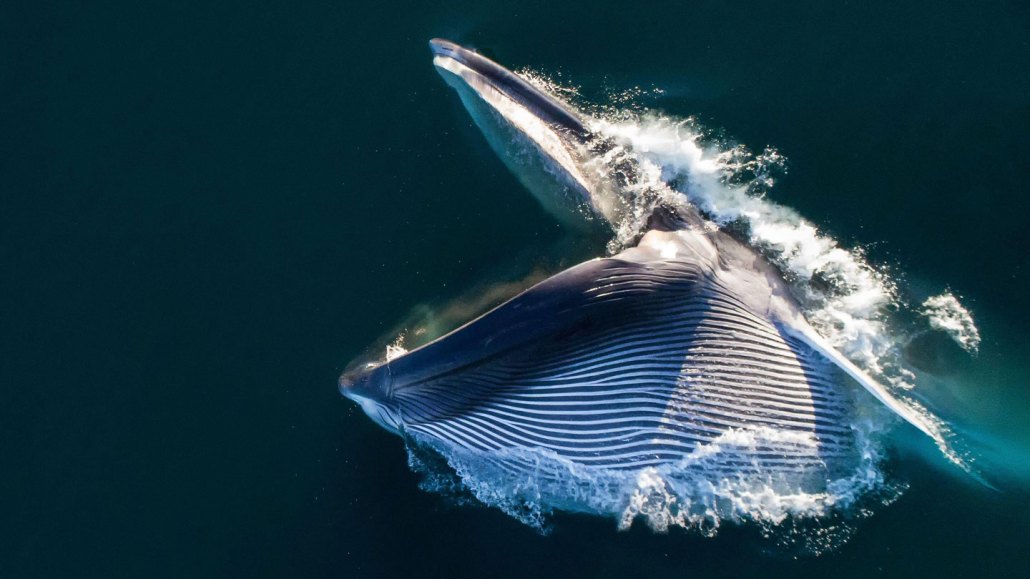A ‘trapdoor’ made of muscle and fat helps fin whales eat without choking
The plug may explain how all lunge-feeding whales keep water out of their lungs and gut

A fin whale lunges, with mouth open and throat pouch distended, as it gulps prey-filled water in the southern Sea of Cortez. Researchers now know how they eat without choking on all that water.
Nature Picture Library/Alamy Stock Photo






